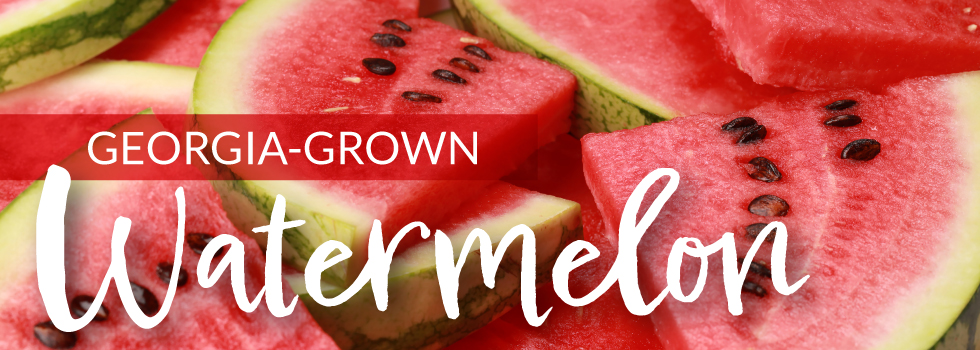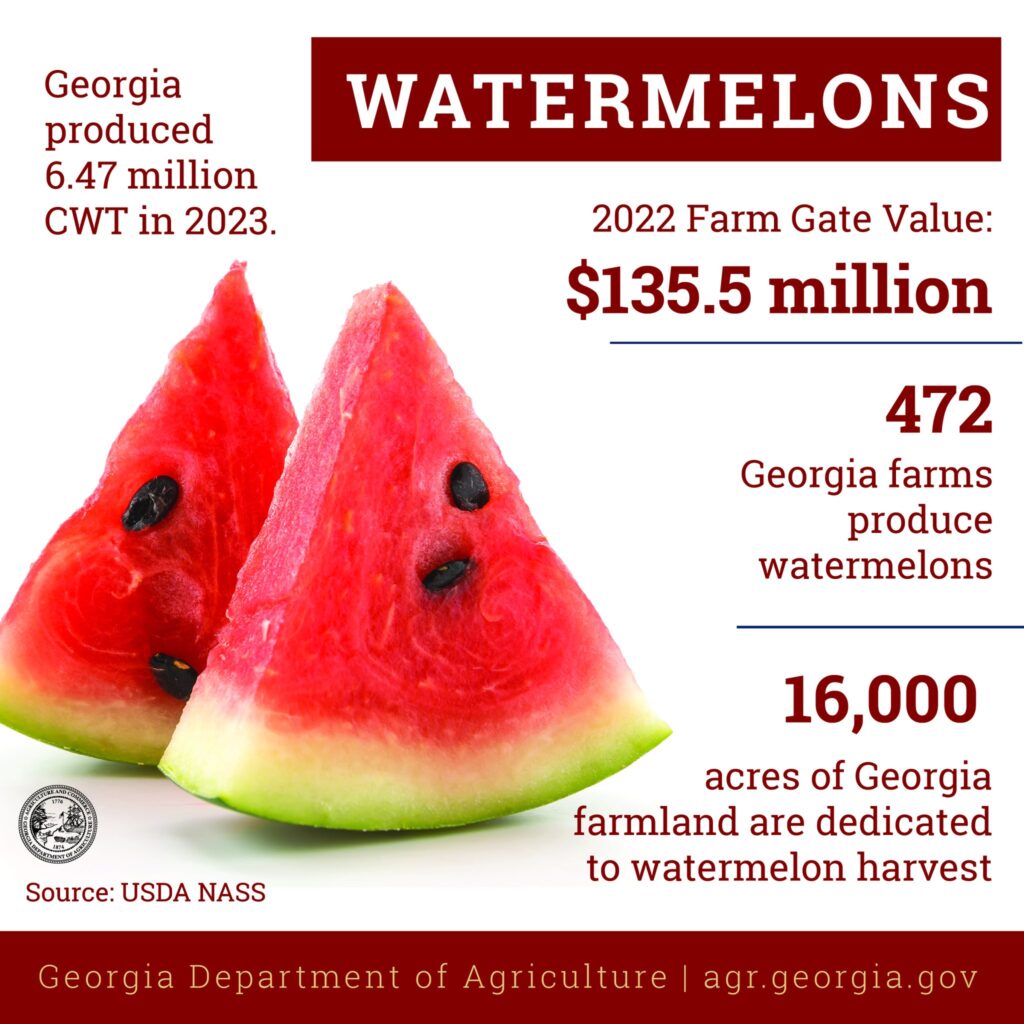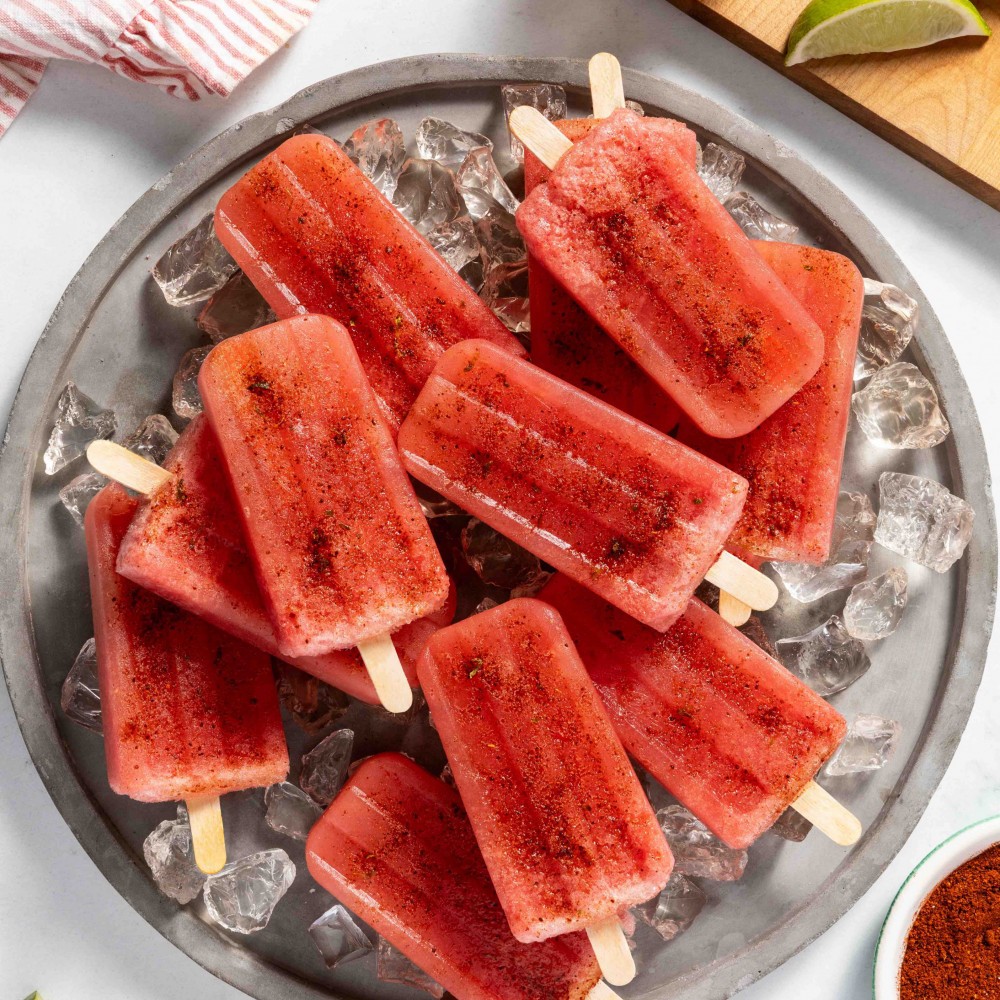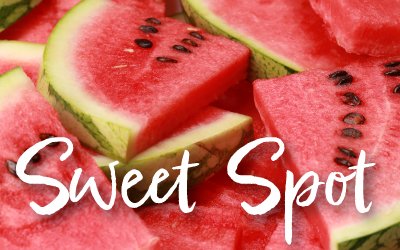
While Georgia has long been associated with peaches, the sweet fruit is not the state’s top crop. The title for #1 produce crop goes to watermelons, reports the Georgia Department of Agriculture.
With some 40,000 acres in production, Georgia ranks among the top four watermelon- producing states in the U.S. Texas, California and Florida round out the group.
Fun facts
July is National Watermelon Month. Let’s celebrate with these homegrown fruit facts:
- Known for their sweetness, watermelons are well-suited to Georgia’s climate and soil. Commercial production is concentrated in Central Georgia and along the state’s southern Coastal Plains.
- Cordele in Crisp County, which grows and ships over 200 million pounds of melons annually, is the self-proclaimed “Watermelon Capital of the World.”
- The state’s prolific production is represented by the Georgia Watermelon Association, a trade group focused on promoting the industry from production to consumption. The group even has a Georgia Watermelon Brand Ambassador, an individual who tours the state, nation and world to increase sales for the Georgia watermelon industry. The current ambassador is Katelyn Lindsay of Locust Grove.
- A 2022 survey, funded by the National Watermelon Production Board, found that 100% of consumers say watermelon makes them feel happy. They survey also found that 81% of consumers consider watermelon a comfort food.
- The entire watermelon is edible. The rind, flesh and juice can be used to create nutritious foods.

Picking produce
Watermelon-growing season peaks in Georgia from mid-June to mid-July. It’s the very best time of year to score a melon to make a cool, crisp side dish to complement a summertime barbecue or picnic. You’ll find plenty of locally grown melons available at area farms, roadside stands, farmers’ markets and grocery stores.
Use these pointers for choosing the sweetest, tastiest melon:
- Look: The watermelon should be evenly shaped with no cuts or bruises. Its skin should be dull and dark, not shiny. A brown, dried stem indicates the watermelon was picked ripe.
- Lift: A watermelon that feels heavy for its size is likely to be juicy and sweet.
- Turn: A yellow or creamy field spot (the area where it rested on the ground) is a good sign of ripeness and sweetness. Look for webbing, a network of thin lines or veins, especially around the field spot. Larger webbing indicates a more sweet and well-pollinated watermelon.
- Listen: Give it the thump test. Gently tap the melon’s underbelly. A ripe watermelon will sound hollow and deep.

Chili-Lime Watermelon Popsicles, recipe from watermelon.org
A healthy option
Besides being a sweet treat, watermelon is also healthy to eat. The Georgia Watermelon Association shares these superfood facts:
- Watermelon is a natural hydrator. It contains 92% water.
- Watermelon is a sweet and natural multi-vitamin consisting of vitamins A, B6 and C.
- Watermelon contains citrulline which helps reduce muscle soreness after exercise.
- Watermelon contains higher levels of lycopene than any other fresh fruit or vegetable. Some studies associate a diet rich in the antioxidant lycopene to reducing the risk of select types of cancer and providing added skin protection from harmful UV rays.
- Cholesterol-free, fat-free, sodium-free and 80 calories per serving, watermelon is American Heart Association Heart-Check Certified.
Whether you do it for the health benefits or simply because it tastes so good, pick up a Georgia-grown watermelon this season. The Georgia Department of Agriculture offers a checklist of places selling locally grown watermelons at georgiagrown.com.
Once you get your melon home, try out one of the recipes shared at watermelon.org. Creative offerings like Chili-Lime Watermelon Popsicles are sure to make you the hit of the neighborhood barbecue.

